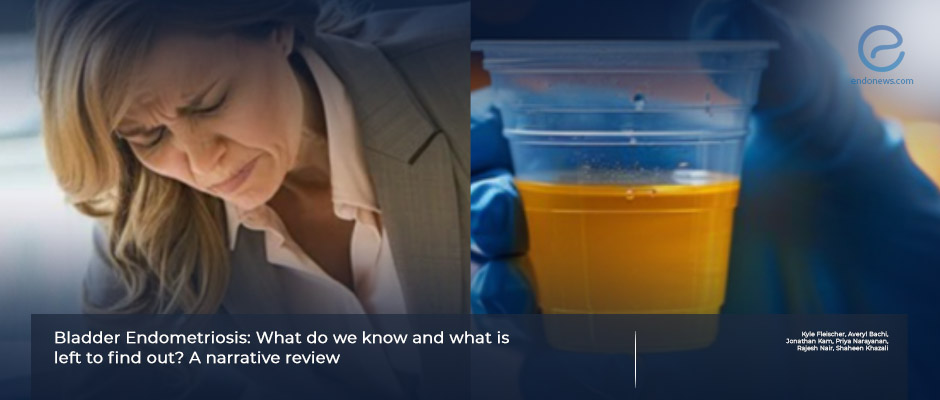Bladder Endometriosis: Current Knowledge and Future Directions
Sep 19, 2024
Bladder Endometriosis: Unraveling Insights
Key Points
Importance:
- Recognizing bladder symptoms early is vital for diagnosing bladder endometriosis, as delays can profoundly affect overall well-being.
- Clinicians need to recognize the range of differential diagnoses that may overlap and contribute to the symptoms of bladder endometriosis.
Highlights:
- Complete surgical excision is an effective management strategy for bladder endometriosis, providing symptom relief and a low recurrence rate.
What's done here:
- This article by Fleischer et al. from the UK provides a comprehensive overview of bladder endometriosis in lecture format.
- The authors cover its prevalence, etiology, symptoms, diagnosis, management, and surgical approaches in a systematic manner.
Basic Outlines:
- Urinary tract endometriosis affects 1-12% of individuals with endometriosis, with bladder endometriosis being the most common, comprising 75-80% of cases.
- Bladder endometriosis can develop as a primary condition or as a secondary result of pelvic surgery.
- Key clinical symptoms include painful bladder filling, urgency, frequency, incontinence, voiding dysfunction, dysuria, and hematuria.
- Suspected patients should undergo midstream urine dipstick testing, with or without microscopy, culture, and sensitivity, for differential diagnosis.
- Ultrasound and MRI are effective tools for diagnosing bladder endometriosis, while retrograde pyelography and cystoscopy are used in select cases.
- Individuals with risk factors for bladder cancer should be evaluated with a diagnostic cystoscopy.
- Management options include conservative approaches, medical treatment, and surgical therapies.
- In surgical management—whether via bladder shaving or partial cystectomy—the goal should be complete excision of the disease while preserving healthy tissue. Transurethral resection is not recommended.
Lay Summary
About 70-80% of urinary tract endometriosis occurs in the bladder, particularly affecting the base and dome regions. Endometriotic lesions can penetrate the detrusor muscle either partially or completely. Endometriosis affecting the uterovesical fold peritoneum or deep endometriosis that does not involve the bladder muscle, is not classified as "bladder endometriosis."
Research Source: https://pubmed.ncbi.nlm.nih.gov/39112342/
bladder laparoscopy excision surgery pelvic pain suprapubic pain dysuria hematuria urgency dysmenorrhea dyspareunia dyschezia endometriosis.

